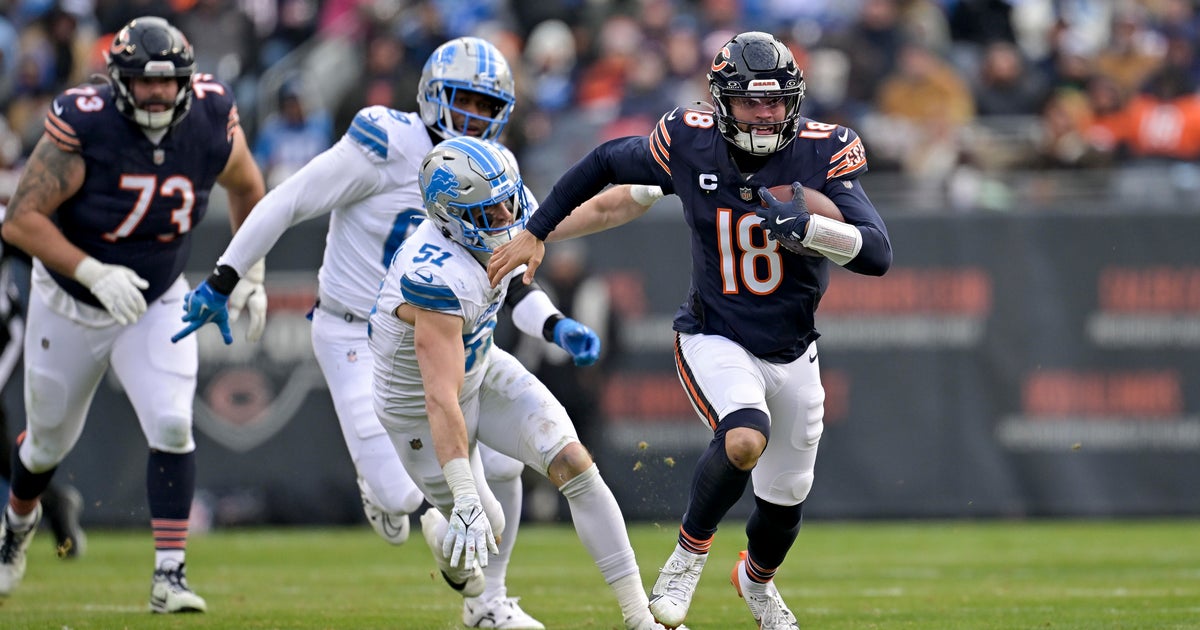Wisch: The Real Reasons Behind Ron Zook's Rise And Fall
By Dave Wischnowsky –
(CBS) When it comes to coaching college football, Ron Zook has had more problems than Jay-Z.
"I got 99 problems, but the score ain't one …"
But, when it comes to the reasons why Illinois' seventh-year head football coach held on to his job for so long and why he finally lost it on Sunday morning, I can boil Zook's problems down to just four:
The legs of Rashard Mendenhall and Mikel Leshoure. Or, really, the absence of them.
Yes, beyond the recruiting successes, the forgotten game scores and the countless special teams mishaps, the true tale of the rise and fall of Zook's Keystone Kops regime in Champaign lies in the tracks left by those legs.
That's because during their record-setting college seasons, superstar running backs Mendenhall and Leshoure simply made everything at Illinois – including the quarterbacks – look so much better than, in reality, any of it ever was. And, in turn, they made things look so much worse – and realistic – after they skipped town for the NFL.
As frustrated Illini fans know all too well, in his seven years at Illinois, Ron Zook had only two winning seasons: 2007 and 2010. He also had two enormously disappointing ones: 2008 and 2011.
The fact that those colossal flops directly followed Zook's greatest triumphs was no coincidence, of course. Because, without a standout running back to rely upon, Zook's inability to outscheme opposing coaches with any consistency was fully – and woefully – exposed.
Take a look back at 2007, when Illinois went 9-4 and surprisingly reached the Rose Bowl on the legs of Mendenhall, who as a junior rushed for a school-record 1,681 yards and tallied 19 touchdowns.
That season, sophomore QB Juice Williams also earned big-time accolades for the Illini, largely because he played so well in the upset of No. 1 Ohio State. For the full year, though, Williams' passing numbers actually were fairly pedestrian: A 57.3 completion percentage, 1,743 yards (134.1 per game), 13 TDs and 12 interceptions. Rashard ran the show for the Illini and Juice's mistakes didn't cost the team big because of it.
After the Rose Bowl, however, Mendenhall went pro early and Zook couldn't replace him. For the '08 season, Williams – who optimistic fans were counting on to seamlessly shoulder the offensive load – actually ended up as the team's leading rusher with 719 yards, nearly 1,000 less than Mendenhall's totals. The top running back, Daniel Dufrene, finished with just 663.
Meanwhile, though the air, Williams' numbers went way up in '08 with a 57.5 completion percentage, 3,173 yards (264.4 per game), 22 TDs and 16 interceptions. But his wins also went way down as Illinois tumbled to a 5-7 record without a reliable rushing attack. Sans Mendenhall, Williams' inability to complete mid-range passes and protect the ball in crucial situations became painfully apparent. In a nutshell, Juice simply wasn't as good as Illinois fans had imagined him to be.
Fast forward to 2010 when Leshoure made like the second coming of Mendenhall as he set a new school record by rushing for 1,697 yards while also recording 19 TDs. Behind his big games and big gains, the Illini went a surprising 7-6 and won the Texas Bowl for Zook.
Meanwhile, playing alongside an NFL-bound running back, redshirt freshman QB Nathan Scheelhaase showed promise in his first season with a 58.7 completion percentage, 1,825 yards (140.4 per game), 17 TDs and just eight interceptions.
This past winter, however, Leshoure made like Mendenhall again and declared for the NFL after his junior campaign. And, again, Zook couldn't fill his star running back's cleats. This season, Illinois was left with Jason Ford to lead a 6-6 team in rushing with a meager 600 yards – nearly 1,100 less than Leshoure racked up a year ago.
As for Scheelhaase, his passing numbers did go up this season: 63.6 completion percentage and 1,971 yards (164.2 per game). But without a star tailback to draw attention away from him, the QB's consistency, job security (he regularly swapped time with freshman Reilly O'Toole) and point production (just 12 TDs against seven interceptions) all went down.
If reading all of that felt like déjà vu, it's because reading all of that should feel like déjà vu.
Back in 2007, Zook's job status was shaky with a 4-19 record overall and a 1-15 mark in the Big Ten when Rashard Mendenhall saved his job – and helped create the illusion of Juice Williams. In turn, and in spite of an awful 8-16 record after the Rose Bowl, that Mendenhall-fueled season gave Zook enough chips to hang on until 2010 when Leshoure again saved his bacon and helped create the illusion of a sizzling Nathan Scheelhaase.
This season, however, with no big tailback for Zook to hide behind, both the coach and his program were again exposed for what they really are. And in this case, it wasn't that the Illini king had no clothes. Rather, it was that he had no legs.
Not ones like Rashard Mendenhall's and Mikel Leshoure, at least.
And that simple fact ended up finally running Ron Zook out of town.
If nothing else, Dave Wischnowsky is an Illinois boy. Raised in Bourbonnais, educated at the University of Illinois and bred on sports in the Land of Lincoln, he now resides on Chicago's North Side, just blocks from Wrigley Field. Formerly a reporter and blogger for the Chicago Tribune, Dave currently writes a syndicated column, The Wisch List, which you can check out via his blog at http://www.wischlist.com. Follow him on Twitter @wischlist and read more of his CBS Chicago blog entries here.



